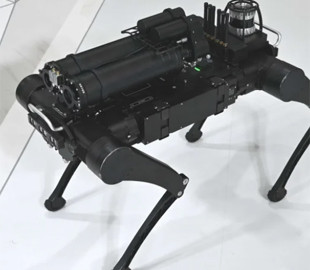
At the KADEX 2024 exhibition in South Korea, Hyundai Rotem and Rainbow Robotics presented a new multi-legged defense robot designed to military missions to fight terrorism. This system combines advanced robotic technologies and autonomous weapon systems, drawing on the experience of both companies.
The robot is designed to operate in difficult terrain, such as mountainous areas or urban environments, and to transport supplies or evacuate wounded soldiers. Its ability to navigate extreme terrain, such as rocky surfaces and narrow trails, makes it well-suited for operations in a variety of environments.
Hyundai Rotem said the partnership expands its research and development capabilities and its manufacturing competitiveness. advanced defense equipment. The robot will be used for surveillance and reconnaissance missions, in particular to support anti-terrorist operations.
Rainbow Robotics previously worked with the South Korean military to develop four-legged robots designed for surveillance operations. This new partnership with Hyundai Rotem aims to produce a new generation of protective robots that would meet the requirements of today's combat environment.
RBQ-3 and RBQ-10, manufactured by Rainbow Robotics, — these are four-legged robots with advanced technical characteristics, designed for surveillance, reconnaissance and other complex tasks. Although both models share basic functions, they offer special features tailored to different operational needs.
200% Deposit Bonus up to €3,000 180% First Deposit Bonus up to $20,000- RBQ-3 compact, has dimensions of 350 x 550 x 400 mm, weight 25 kg, load capacity 5 kg. Autonomy – 150 minutes of continuous walking. This model can move at a maximum speed of 3.6 km/h when walking and 10 km/h when running, and can overcome obstacles up to 8 cm high without the aid of visual recognition. It is also capable of climbing slopes up to +20°. The robot is equipped with a frontal RGB camera and a Wi-Fi connection for communication, and also allows connecting to external equipment via a UDP channel for walking commands;
- RBQ-10 The , on the other hand, is a larger model with dimensions of 550 x 1000 x 600 mm and a weight of 40 kg. It can carry a payload of 10kg and, like the RBQ-3, offers 150 minutes of continuous walking. With an IP54 rating, it can walk at a maximum speed of 4 km/h and run at a speed of 12 km/h. The robot can overcome obstacles up to 12 cm and climb slopes with a longitudinal slope of 45% and a transverse slope of 20%. The RBQ-10 is equipped with multiple RGB cameras: one in the front, one in the back, and two on the sides, as well as stereo depth cameras located on the front, back, and bottom of the robot. For communication, it supports Wi-Fi and optional communication modules, as well as ROS2, CAN communication and USB/LAN interfaces for vision control.
Both four-legged robots are designed to provide flexibility and optimal performance in a variety of environments, from off-road to urban missions, integrating advanced technologies for universal use.

